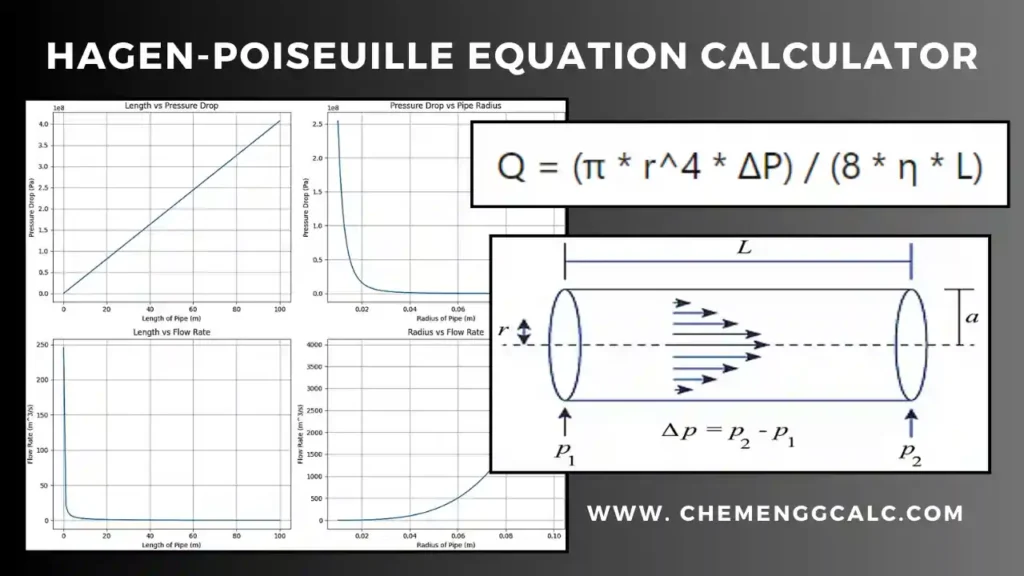Table of Contents
Specific heat capacity is one of the essential properties of a material that plays an important role in thermodynamics and heat transfer. It is quantified as a measure of resistance to temperature change when heat is added or removed.
Specific Heat Capacity, c is defined as the amount of heat energy required to raise the temperature of a unit mass of a substance by one degree Celsius or Kelvin.
To calculate the specific heat capacity, we use the formula:
c = Q / (m * ΔT)
where in S.I units:
- ΔT is the temperature change of the substance (in K or ∘C).
- Q is the heat energy supplied or removed (in Joules, J).
- m is the mass of the substance (in kg).
- c is the specific heat capacity (in J/kg·°C or J/kg·K)
Related: Kirchoff’s Law of Thermal Radiation, Wien’s Displacement Law
Related: Joule-Thomson Effect – Coefficient Calculation for CO2 and N2
Specific Heat Capacity Calculator
This Specific Heat Capacity Calculator allow user to calculate various thermodynamic parameters based on the relationship between mass, heat energy, temperature change, and specific heat capacity.
Related: Effectiveness – NTU Calculation for Heat Exchanger Analysis
Related: LMTD Calculator with correction factor for Heat Exchanger Design
How to calculate Specific Heat Capacity
To calculate the specific heat capacity (c) of a substance, follow the steps given below:
- Measure the amount of heat energy (Q) supplied or absorbed by the substance. It can be measured using a calorimeter or calculated based on heat source.
- Measure the mass (m) of the substance. It is the amount of matter in the substance being heated or cooled. It is typically measured using a balance or scale.
- Measure the temperature change (ΔT) which is the difference between the final temperature (Tfinal) and the initial temperature (Tinitial) of the substance. It represents the increase or decrease in the temperature caused by the heat energy.
- Calculate the specific heat capacity using the formula c = Q / (m * ΔT)
Related: Online Psychrometric Calculator for Chemical Engineers
Related: Reynolds Number Calculator for a Circular Pipe
Specific Heat Capacity of Water
The specific heat capacity of water is approximately 4.18 J/g°C or 4180 J/kg°C at room temperature. It means that it takes 4.18 joules of energy to raise the temperature of 1 gram of water by 1°C (or 4180 joules to raise the temperature of 1 kilogram of water by 1°C).
Water has a very high specific heat value, which means it can absorb a large amount of heat without experiencing a large temperature change. Due to its large heat capacity value, water is an efficient medium for regulating temperature in both natural and industrial processes.
Here in the table below displaying the values of the specific heat of water in different units:
| Unit | Value |
|---|---|
| Joules per gram per degree Celsius (J/g·°C) | 4.18 J/g·°C |
| Joules per kilogram per degree Celsius (J/kg·°C) | 4180 J/kg·°C |
| Calories per gram per degree Celsius (cal/g·°C) | 1 cal/g·°C |
| Kilocalories per kilogram per degree Celsius (kcal/kg·°C) | 1 kcal/kg·°C |
| BTU per pound per degree Fahrenheit (BTU/lb·°F) | 0.998 BTU/lb·°F |
| Kilojoules per kilogram per degree Celsius (kJ/kg·°C) | 4.18 kJ/kg·°C |
Related: Kirchoff’s Law of Thermal Radiation, Wien’s Displacement Law
Related: Joule-Thomson Effect – Coefficient Calculation for CO2 and N2
Specific Heat Capacity of Common Substances
Here is a table listed below with the specific heat capacity of common substances under standard conditions (1 atm pressure and room temperature, ~25°C):
| Substance | State | Specific Heat Capacity (J/kg·°C) |
|---|---|---|
| Water ( at 25 °C) | Liquid | 4180 |
| Ice (water at −10 °C) | Solid | 2050 |
| Steam (water at 100 °C ) | Gas | 1996 |
| Aluminum | Solid | 897 |
| Copper | Solid | 385 |
| Iron | Solid | 450 |
| Gold | Solid | 129 |
| Silver | Solid | 235 |
| Air | Gas | 1005 |
| Ethanol | Liquid | 2440 |
| Granite | Solid | 790 |
| Glass | Solid | 840 |
| Mercury | Liquid | 140 |
Data Source: Wikipedia – Heat Capacity Values
With the information given above, user can calculate the energy required to raise or lower the temperature of a sample. For example, one can determine how much heat is required to warm a swimming pool to a comfortable temperature or cool down a beverage in the refrigerator.
Example Problem
Determine the temperature difference if 40 Kg of water absorbs 400 KJ of heat.
Data given:
- Mass of water, m = 40 Kg
- Heat transfer, Q = 400 KJ = 400 x 103 J
- Specific heat of water, c = 4180 J ⁄ Kg °C
Formula for heat capacity:
c = ΔQ / (m * ΔT)
Rearrange the formula to solve for ΔT:
ΔT = ΔQ / (c * m)
ΔT = (400 × 103) ⁄ (4180 × 40) °C
ΔT = 2.39 °C
Hence, the temperature difference is 2.39 °C.
Also Read: Van der Waals Equation Calculator and PV Isotherm for Real Gases
Resources
- “Thermodynamics: An Engineering Approach” by Yunus A. Çengel and Michael A. Boles
- “Introduction to Chemical Engineering Thermodynamics” by J.M. Smith, H.C. Van Ness, and M.M. Abbott
- NPTEL Lectures on Thermodynamics
Disclaimer: The Solver provided here is for educational purposes. While efforts ensure accuracy, results may not always reflect real-world scenarios. Verify results with other sources and consult professionals for critical applications. Contact us for any suggestions or corrections







Appreciate this post. Will try it out.